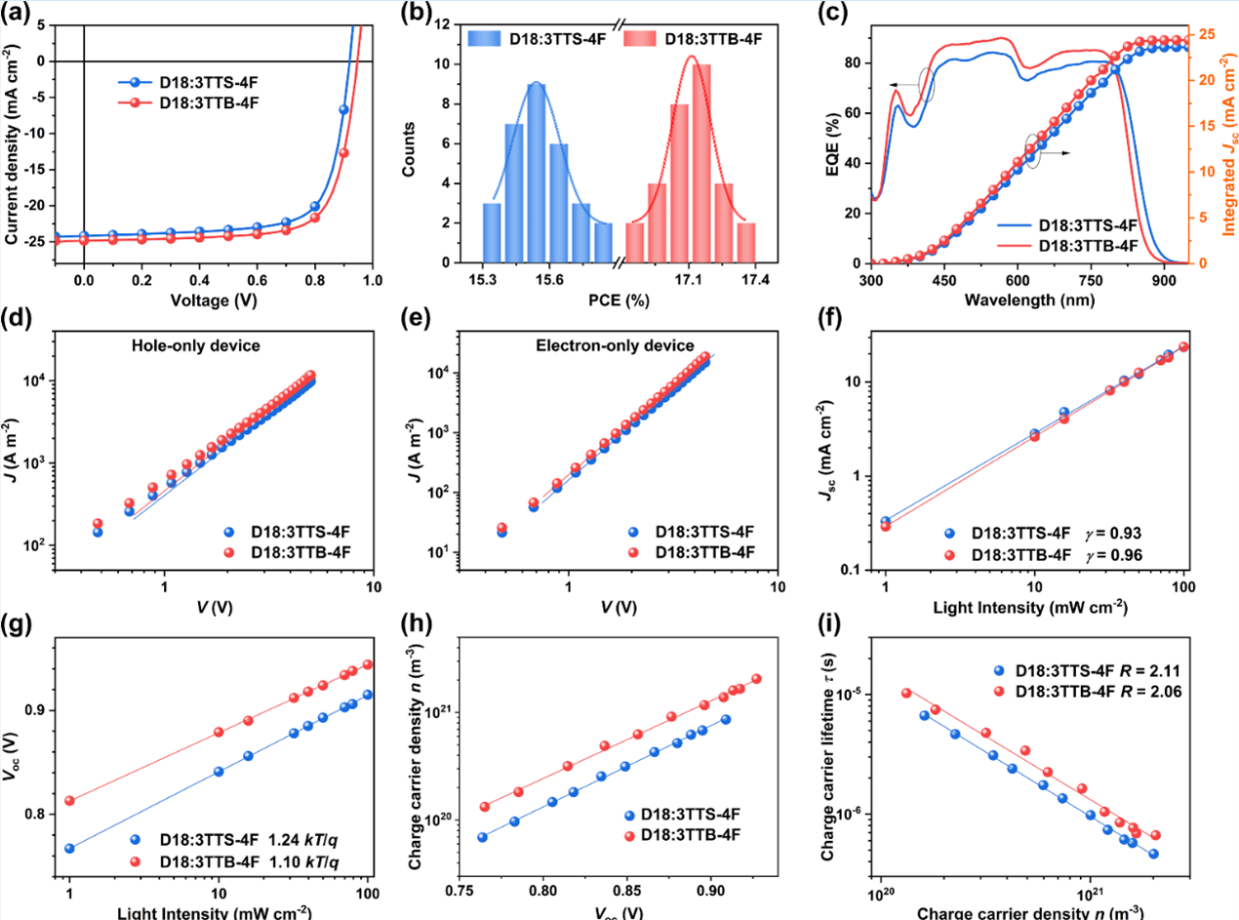The charge transport properties of organic semiconductor materials greatly affect (or even determine) the performance of organic solar cells, so building efficient charge transport channels is crucial to realizing high-performance organic photovoltaic devices. In recent years, the emergence of fused-ring electron acceptors has greatly promoted the development of this field. In particular, the introduction of halogen atoms to regulate non-covalent interactions between molecules and the design of banana-shaped geometric configuration molecules have been proven to be effective in building three-dimensional charge transport networks. and effective strategies to improve organic solar energy conversion efficiency. Compared with fused-ring electron acceptors, non-fused-ring electron acceptors may become one of the best candidates for low-cost organic solar cells in the future due to their simple molecular structure and convenient synthesis route. However, the efficiency of organic photovoltaic devices based on this type of acceptor material still lags far behind that of fused-ring electron acceptors. In particular, there is still a lack of methods to construct efficient non-fused-ring electron acceptor charge transfer channels.
Recently, the research team collaborated with Professor Liu Feng of Shanghai Jiao Tong University and published a research paper titled "Simple-Structured Acceptor with Highly Interconnected Electron-Transport Pathway Enables High-Efficiency Organic Solar Cells" in the internationally renowned journal Advanced Materials. This work achieved the transformation from a one-dimensional chain transmission channel to a three-dimensional highly interconnected electron transmission network by regulating the alkyl topology of the non-fused ring electron acceptor, and at the same time conducted a comprehensive and in-depth study of device physics. The organic photovoltaic device based on D18:3TTB-4F achieved a photoelectric conversion efficiency of 17.38% (NPVM verified efficiency is 16.59%), breaking the current efficiency record of organic photovoltaic devices based on non-fused ring electron acceptors.
Point 1: Control alkyl topology

Figure 1. Molecular structure and photoelectric properties
In this work, two new non-fused ring electron acceptors, 3TTS-4F and 3TTB-4F, were developed, which have the same conjugated backbone, but the side chains are substituted with straight-chain and branched-chain alkyl groups respectively (Figure 1). UV-visible absorption spectra show that 3TTS-4F and 3TTB-4F maintain almost the same absorption peak (~726 nm) in the solution state, but have significantly different red shifts from solution to film, indicating the existence of molecular stacking in the solid state. Significant differences.
Point 2: Build highly interconnected charge transfer channels

Figure 2. Single crystal analysis and mechanism study
Single crystal XRD diffraction analysis results show that there are two effective stackings in the 3TTS-4F crystal with linear alkyl substitution that slide parallel along the main chain direction, so π-π stacking is performed in one-dimensional direction to form a chain. charge transfer channel. In contrast, 3TTB-4F with branched alkyl substitution not only has the above two stacking modes, but also axially rotated π-π stacking is observed, thus constituting a highly interconnected charge transport channel in the three-dimensional direction.
Point 3: Achieve record-breaking photoelectric conversion efficiency

Figure 3. Photovoltaic performance and device physics study
The D18:3TTB-4F system has more effective exciton dissociation, suppressed charge recombination, more balanced charge transport, lower energy loss and a more suitable phase separation scale, and finally achieved a photoelectric conversion efficiency of up to 17.38% (The verification efficiency is 16.59%), refreshing the record value of organic photovoltaic devices based on non-fused ring electron acceptors (Figure 3). This work provides an effective strategy to construct highly interconnected charge transport networks and provides new research ideas for realizing high-performance non-fused ring electron acceptors.
Gu Xiaobin, a doctoral candidate in the research group, is the first author of this article. Zeng Rui, a doctoral candidate at Shanghai Jiao Tong University, is the co-author. Professor Huang Hui and Associate Professor Zhang Xin from the University of Chinese Academy of Sciences and Professor Liu Feng from Shanghai Jiao Tong University are the co-corresponding authors of the paper. The author thanks the National Natural Science Foundation of China, the Chinese Academy of Sciences and other related projects for funding.
【Link】
Simple-Structured Acceptor with Highly Interconnected Electron-Transport Pathway Enables High-Efficiency Organic Solar Cells.
Adv. Mater., 2024, 2401370.
https://doi.org/10.1002/adma.202401370.


